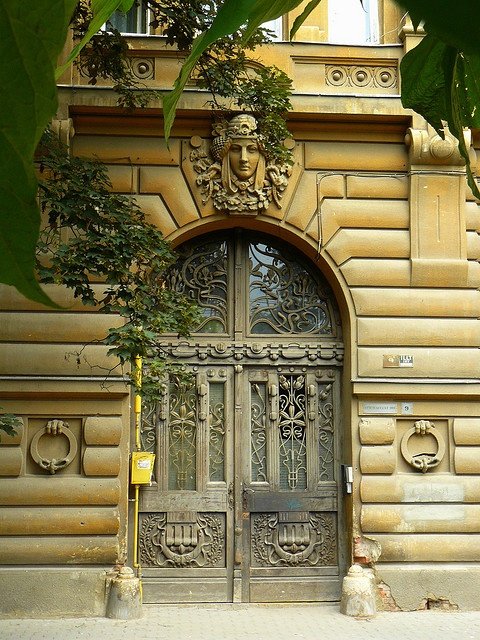#5147. Historic Façade with Female Mascaron: Neoclassical Elegance and Wrought Iron Artistry
The image showcases an expressive façade of a historic building, executed in a neoclassical or eclectic style characteristic of European architecture from the late 19th to early 20th century. The composition's main focal point is a monumental entrance portal with an arched top, framed by rusticated masonry of large stone blocks in a sandy-yellow hue.
The central decorative element crowning the entrance arch is a sculptural mascaron in the form of a female head, presumably depicting an ancient deity or allegorical figure. This typical element of neoclassical architecture lends the façade solemnity and symbolic depth.
The double entrance door is crafted from metal with an elegant forged pattern, incorporating elements of floral ornament and a lyre motif in the lower section – a detail suggesting the building's possible connection to art or music. On both sides of the entrance are decorative ring holders that once served for tethering horses.
Special picturesqueness is added to the façade by elements of natural "decoration" – climbing plants partially covering the building wall and framing the architectural details. This creates an organic fusion of man-made architecture and nature, softening the strictness of classical forms.
The façade composition demonstrates a carefully considered hierarchy of elements with a gradation from massive rusticated foundation to more detailed and elegant decoration of the upper parts of the building, which is characteristic of the architectural tradition of European historicism.
